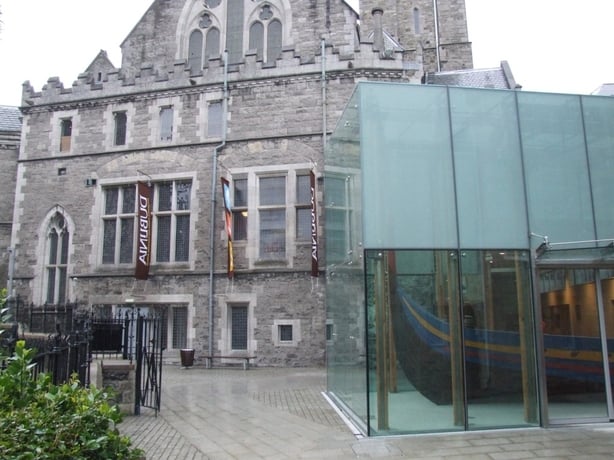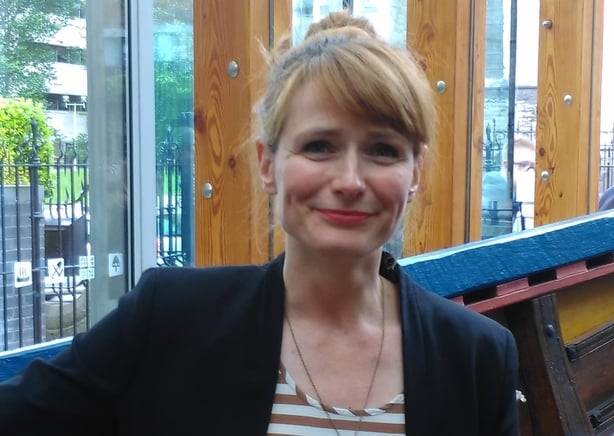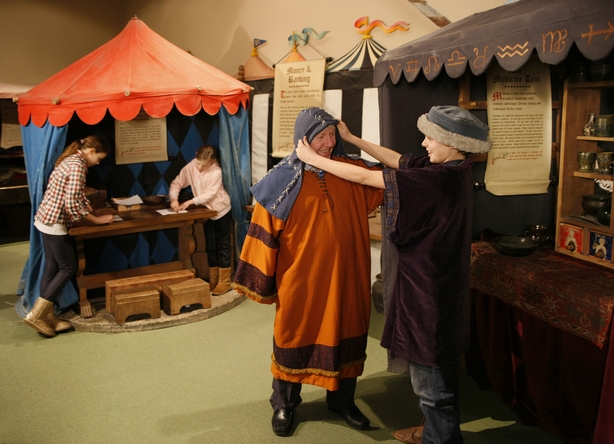Sheila Dooley writes for Culture about her role as curator and education officer at Dublinia, the capital's popular interactive heritage centre.
Emerging through soaked clouds over Dublin, I can just about make out the tempestuous Irish Sea below the right wing of my Scandinavian Airlines plane.
While other passengers try to find their Granny’s house, or query if the island below is Lambay Island or the island Charley Haughey owned, I cannot help but contemplate the treacherous journey our Viking ancestors survived to reach Dublin. Tackling huge waves in open-topped ships without shelter and relying on the past experiences of fellow sailors to locate Dublin, one cannot help have a silent admiration for these violent marauders.
As we land, my foot presses down helplessly on my imaginary breaks and I look forward to emptying my head of all of the new and ground-breaking information I have absorbed from my attendance at Denmark’s Viking Congress.
But I’m home first for a deep night’s sleep in my own bed.

The next morning, there is not much time to brag about my Viking adventures abroad to my colleagues. There are cheerful visitors waiting to gain entry and so I race through the exhibitions, checking the Viking weaponry is on display, adding smells to the spice stall in the medieval fair and turning on the fire in the medieval house.
The third level exhibition is at the top of Dublinia: artefacts from Viking and Medieval Dublin are on display throughout, and even after eight years as curator in Dublinia I am still in utter awe of them.
Where did the Viking keep their alcohol?! pic.twitter.com/ERWx9kuQKc
— Dublinia (@Dubliniaviking) August 26, 2017
Being so close to such personal and intimate objects that touched the hands of our medieval ancestors gives me a humbling feeling of reverence. A tiny leather pouch is displayed beside small pewter coins, each with their own emblem. They weren’t used as currency but were beer money that Dubliners exchanged in the taverns on Winetavern Street just outside. I often wonder do people walking along this street know of the history just below their feet.

On my way back through the exhibitions, I bump into one of our Viking living history guides with a worried expression. All of our guides demonstrate a craft or skill in historically accurate kit but, just like some original artefacts excavated from Viking-age Dublin, her shoe has a hole in it. As stockists of Viking-age footwear are rare in Grafton Street’s shoe stores we decide she should change into her medieval kit and demonstrate lucet braiding, a form of medieval braid crafting, to visitors.
While I am near I climb the ninety-six steps to the top of St Michael’s church tower. I am due to publish a paper on the history of this forgotten medieval church but writers block has set in and my pen is refusing to comply. As I hoped, positioning myself within the masonry walls of the sleeping bell-tower above the wakening city is a remedy for rejuvenation.

On the way back to my office I travel via the medieval exhibition to the Death and Disease exhibition to catch up with one of our regular event demonstrators. Jessica from Montague Heritage Services is an absolute professional. Dressed in a long vegetable-dyed green gown, with a natural coloured apron and a white headpiece, she is here to demonstrate medieval herbal cures to visitors. She is chatting to Aaron, a good-humoured retiree from Michigan who seems to be particularly impressed in the medieval cure for haemorrhoids vowing to write to her with the results of her recommendation.
As I wait for the kettle to boil for my first cup of morning coffee, I suddenly remember I was in Denmark yesterday. It seems like a lifetime ago as only this morning I’ve travelled back in time 1000 years; admired the craftsmanship of artefacts, helped a Viking woman with her outfit and received a cure from a medieval herbalist. A journey without even boarding a plane or sailing a longship.
Located at the crossroads of the medieval city at Christchurch, Dublinia hosts four permanent exhibitions: Viking Dublin, Medieval Dublin, History Hunters archeology exhibition and the newly renovated St Michael’s Tower, as well as events and showcases throughout the year - more information here.

